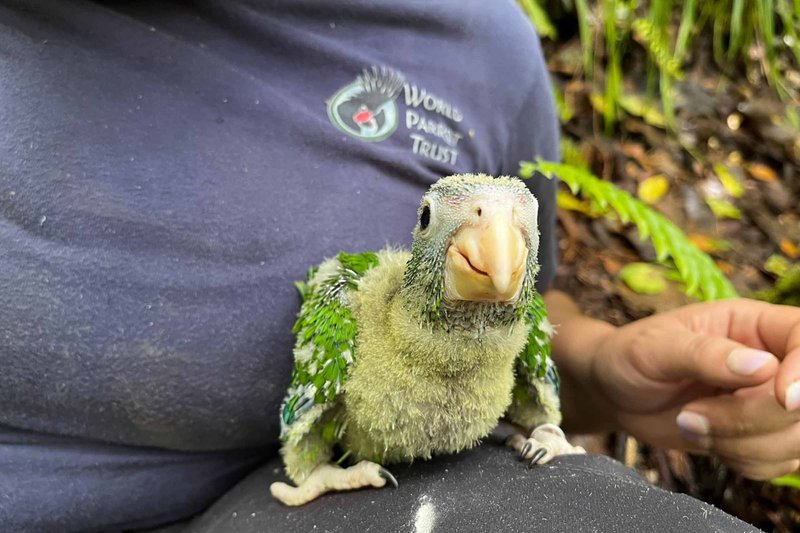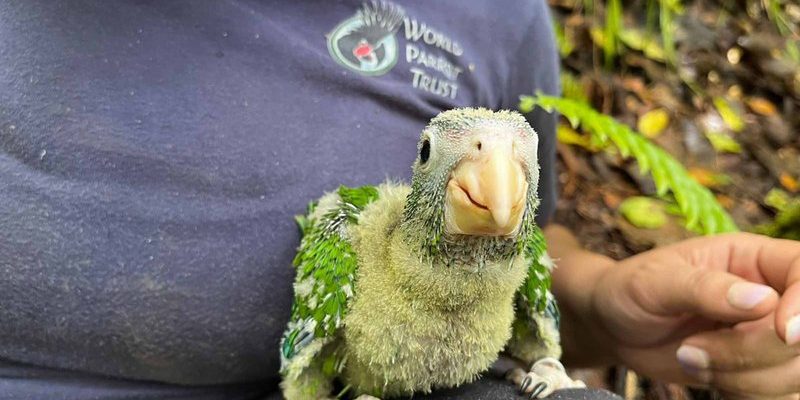
Imagine walking into a lush rainforest, where the vibrant calls of parrots echo around you as they flit from tree to tree. Unfortunately, due to habitat loss, illegal trapping, and climate change, this scene is becoming less common. Conservation efforts aimed at protecting the parrot involve a combination of habitat restoration, legal protections, and public awareness initiatives. These actions help to secure a future where parrots can thrive, bringing their color and joy back into our environments.
Understanding Parrots and Their Habitat
Parrots are a diverse group of birds, with over 393 species found across the globe. They typically inhabit tropical and subtropical regions, preferring lush forests, woodlands, and savannas. Each species has its unique habitat needs. For example, the Amazon parrot thrives in dense rainforests, while the budgerigar, commonly known as the budgie, often inhabits open grasslands and scrub.
These habitats provide not only food resources but also protection from predators. However, many of these environments are being destroyed for agriculture, urban development, and logging. When their homes disappear, so does their chance for survival. Conservation efforts aim to protect these vital ecosystems by creating reserves and promoting sustainable land-use practices.
You might be wondering, “How do we know which habitats to protect?” Conservationists often conduct studies to identify critical areas for various parrot species. By understanding their needs, organizations can better tailor their efforts to ensure these beautiful creatures have a safe place to live.
The Role of Legislation in Conservation
Legal protections are essential in the fight to save parrots from extinction. Many parrot species are threatened or endangered, making it crucial to establish laws that protect them and their habitats. The Endangered Species Act in the United States, for instance, plays a vital role in safeguarding species like the California condor and the Puerto Rican parrot.
This legislation prevents the hunting, trading, or harming of protected species. It also provides funding for habitat restoration and recovery programs. Conservation organizations work tirelessly to advocate for such laws, raising awareness about the plight of parrots and the importance of legislative support.
International agreements, like the Convention on International Trade in Endangered Species (CITES), also play a role. CITES regulates the trade of parrot species, helping to prevent illegal trafficking that can lead to population declines. By working together on these legal fronts, countries can have a more significant impact on conservation efforts.
Community Engagement and Education
Protecting parrots isn’t just about saving the birds; it’s also about engaging communities. Local people often play a critical role in conservation efforts. When communities understand the importance of preserving their environment, they’re more likely to take action.
Many organizations run educational programs that teach people about the local wildlife, including parrots. These programs can include everything from school workshops to community events. For example, teaching children how to create bird-friendly gardens can inspire a new generation of conservationists.
You might have seen bird-watching clubs popping up in your area. These clubs help foster an appreciation for local avian species and educate members on the importance of protecting them. By involving communities, conservation efforts can become more effective and sustainable over time.
Habitat Restoration Projects
Restoring habitats is a crucial part of conservation efforts, especially for parrots. When forests are cut down or degraded, restoring these areas can help bring back the wildlife that once thrived there. Many organizations focus on reforestation projects, planting native trees that offer food and shelter for parrots and other wildlife.
For instance, in regions where the Yellow-shouldered parrot has seen population declines, habitat restoration efforts often involve creating protected areas where these birds can nest and feed. Volunteers, sometimes even local residents, join forces to plant trees and maintain these restored habitats.
Restoration projects also focus on removing invasive species that threaten native wildlife. Invasive plants can outcompete native flora, leading to a decline in food sources for parrots. By addressing these challenges, conservationists can create a healthier ecosystem for all species, including our colorful friends with feathers.
The Importance of Breeding Programs
Breeding programs are critical for increasing populations of endangered parrot species. Many conservation organizations have established captive breeding programs to help boost numbers. These programs often focus on species that have seen dramatic declines due to habitat loss or illegal trapping.
Captive breeding can be a complex process, but the goal is simple: raise healthy parrots that can eventually be released into their natural habitats. The Hyacinth macaw, for example, has benefited from such efforts. With careful management, these programs have successfully increased the populations of some parrot species, allowing for hopeful reintroductions into the wild.
It’s essential for breeding programs to maintain genetic diversity. Conservationists carefully select breeding pairs to avoid inbreeding, which can lead to health problems and reduced resilience. Collaboration between zoos and sanctuaries helps ensure a diverse and healthy population of parrots.
Combating Illegal Trade
Illegal bird trafficking poses one of the most severe threats to parrot populations. Many species are captured from the wild and sold as pets, often leading to drastic declines in population numbers. Fortunately, conservation efforts are working to combat this issue on several fronts.
Organizations focus on raising awareness about the impact of the illegal pet trade. Education campaigns often target potential buyers, highlighting the consequences of purchasing illegally sourced parrots. By changing consumer attitudes, these initiatives aim to reduce demand for trafficked wildlife.
Additionally, law enforcement efforts to crack down on illegal trading are essential. Collaborations between countries can help increase the effectiveness of these actions. For instance, wildlife protection agencies might conduct joint operations to identify and shut down trafficking networks.
Efforts to rehabilitate rescued parrots are just as critical. Birds that have been illegally captured often need special care to reintegrate into the wild. Rehabilitation centers work tirelessly to give these birds a second chance and restore their natural behaviors.
How You Can Help Parrot Conservation
You might be wondering what you can do to help protect parrots and support conservation efforts. Fortunately, there are many ways you can get involved, even from home!
1. Support ethical organizations: Donating to reputable conservation groups or volunteering your time can make a difference. Look for organizations working directly on parrot conservation.
2. Spread awareness: Sharing information about the threats facing parrots on social media or in your community can help raise awareness. The more people know, the more support conservation efforts will receive.
3. Adopt responsible pet ownership: If you’re considering bringing a parrot into your home, make sure to adopt from a shelter or a responsible breeder. Avoid purchasing birds from pet shops, as they may source them through illegal channels.
4. Create parrot-friendly spaces: If you enjoy gardening, consider planting native plants that attract wild birds, including parrots. This helps create safe habitats for them within your local ecosystem.
By taking these steps, you contribute to the collective efforts aimed at ensuring a bright future for parrots everywhere.
With so many species at risk, it’s vital that we act now to protect these remarkable birds. Conservation efforts are key to ensuring that parrots continue to fill our skies with their color and charm. Every action counts, whether big or small, in the journey towards a healthier planet for all its inhabitants. Together, we can help ensure that future generations will also hear the joyful chatter of parrots in the wild.

